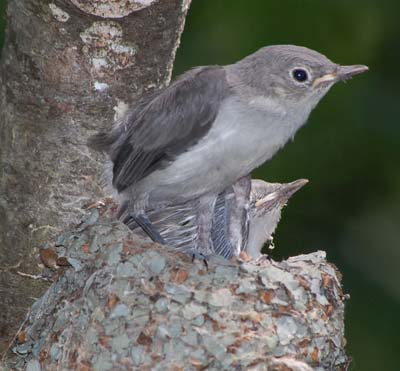Blue-gray gnatcatchers - 2014 nesting
Blue-gray gnatcatchers are known for recycling their old nest to build a new one for their second nest. This spring, the gnatcatchers built three consecutive nests, totally dismantling the first and second to build the second and third. When the second nest appeared to be completed, on May 1st, I observed a female cowbird perched several feet above the nest, appearing to watch the nest with great interest for several minutes. Still higher in the same tree, the gnatcatcher pair were flitting back and forth above the catbird. On May 12, the gnatcatchers were dismantling this second nest and carrying the material back across the creek in the direction of the first nest. On May 15, the third nest was discovered, not back across the creek, but only 50 feet from the second nest and 25 feet high on a slender dead vertical snag. The reason for building and then recycling two nests before finally nesting in the third is unclear. Could this have been the gnatcatchers' response to brood parasitism by the cowbird?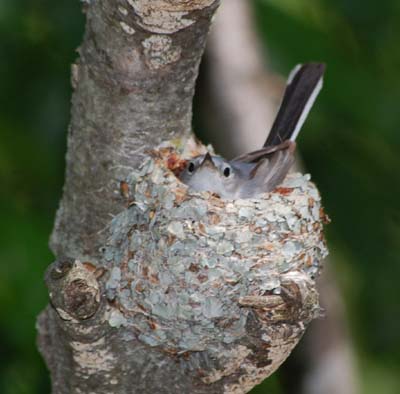
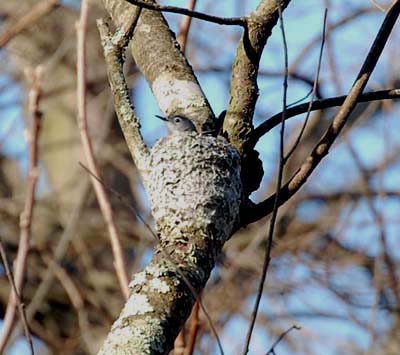
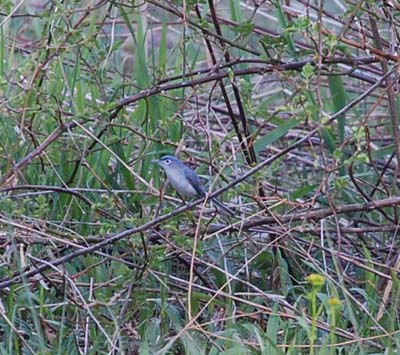
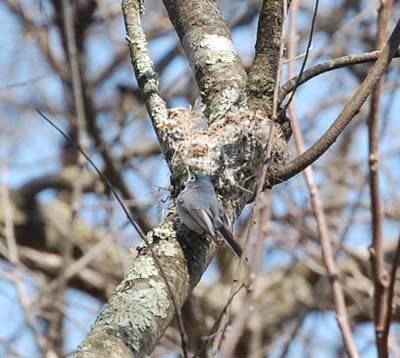
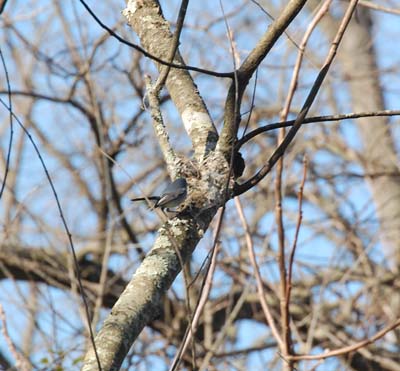
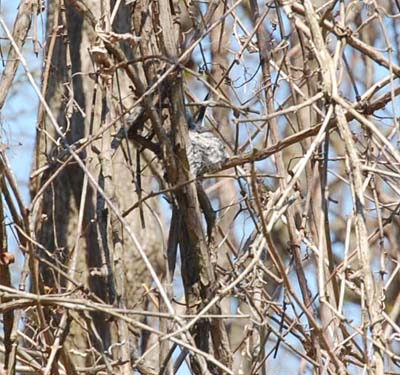
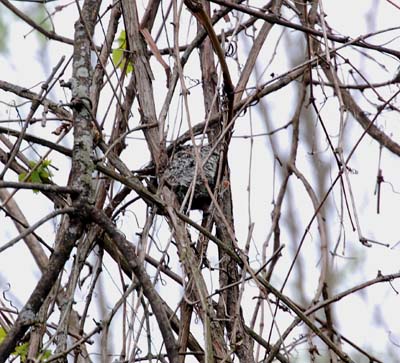
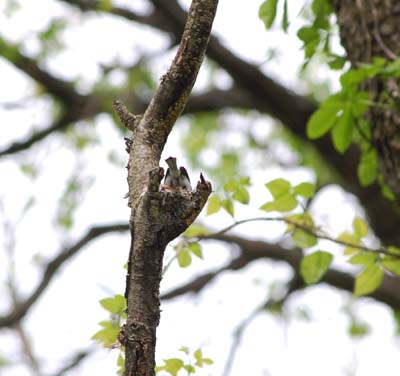
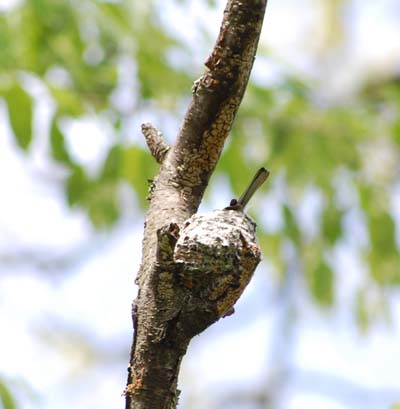
5/15 Building the third nest, this time in a dead vertical branch 25' above ground.
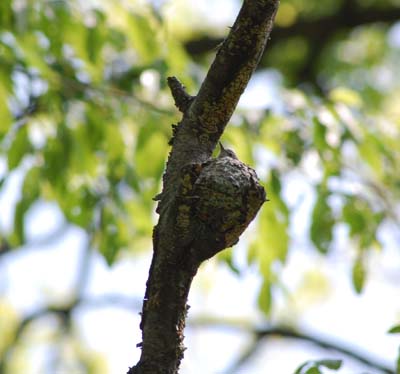
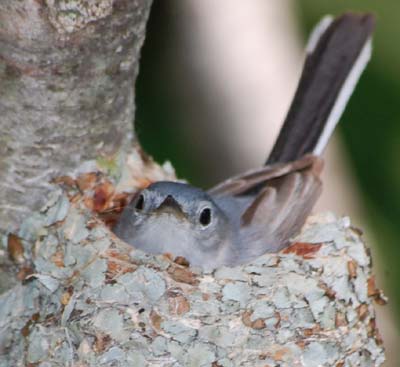
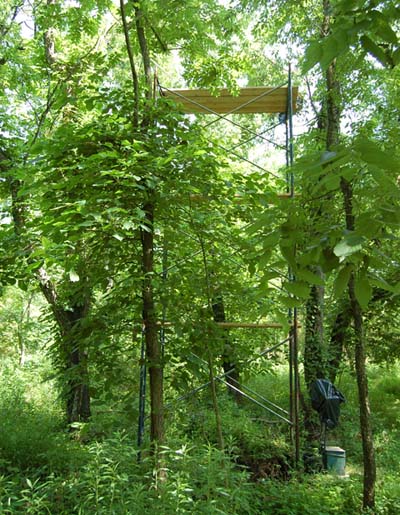
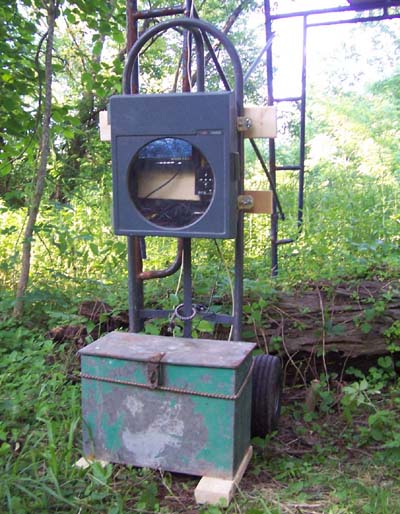
The blind in place. The nest is in the small vertical branch on the left of the blind, 25 ft up. A mirror check showed 3 gnatcatcher eggs and no cowbird egg..
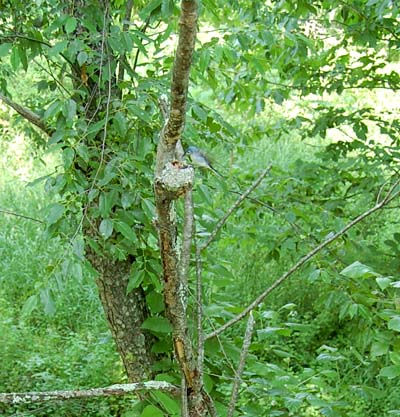
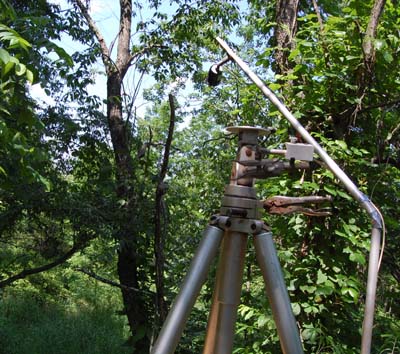
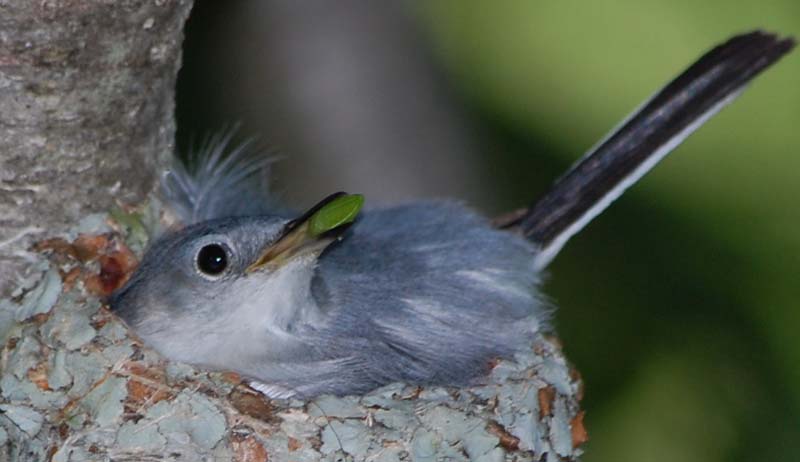
6/7 The female incubating 3 eggs after accepting a treat from the male.
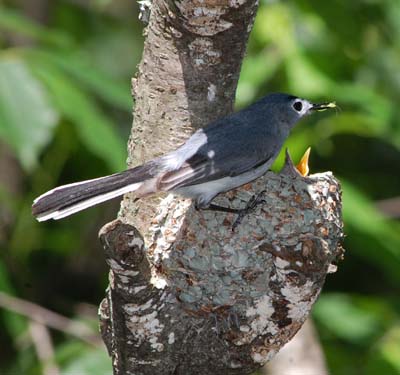
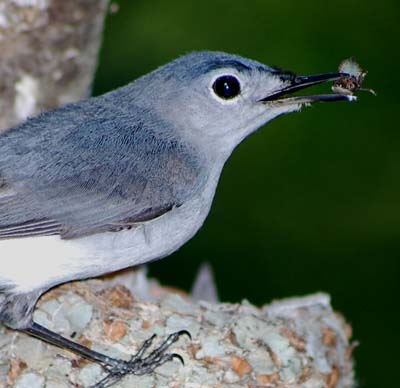
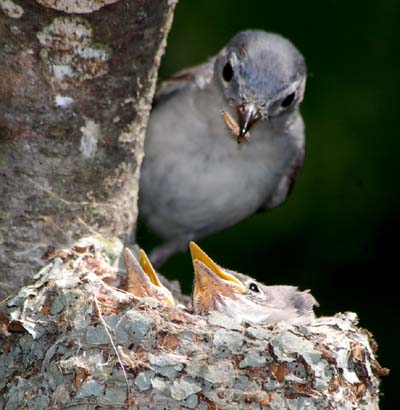
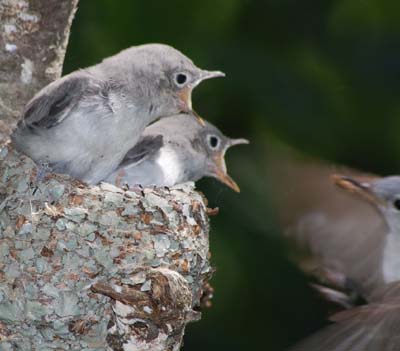
The blue-gray gnatcatchers' repeated nest moves were a surprise. That, coupled with frequent high water at the creek crossing and other delays in erecting the scaffolding and setting up the remote video resulted in only one day of continuous video. But, luckily, there was nothing dramatic to record anyway. The very open location of the nest suggested that nest predation might be likely. The nest was clearly visible from above. And, the gnatcatchers are extremely active birds, continually flitting about in the treetops. However, the lichen covered nests are well camoflaged and the nestlings tend to stay low in the nest cup compared to most other species.
